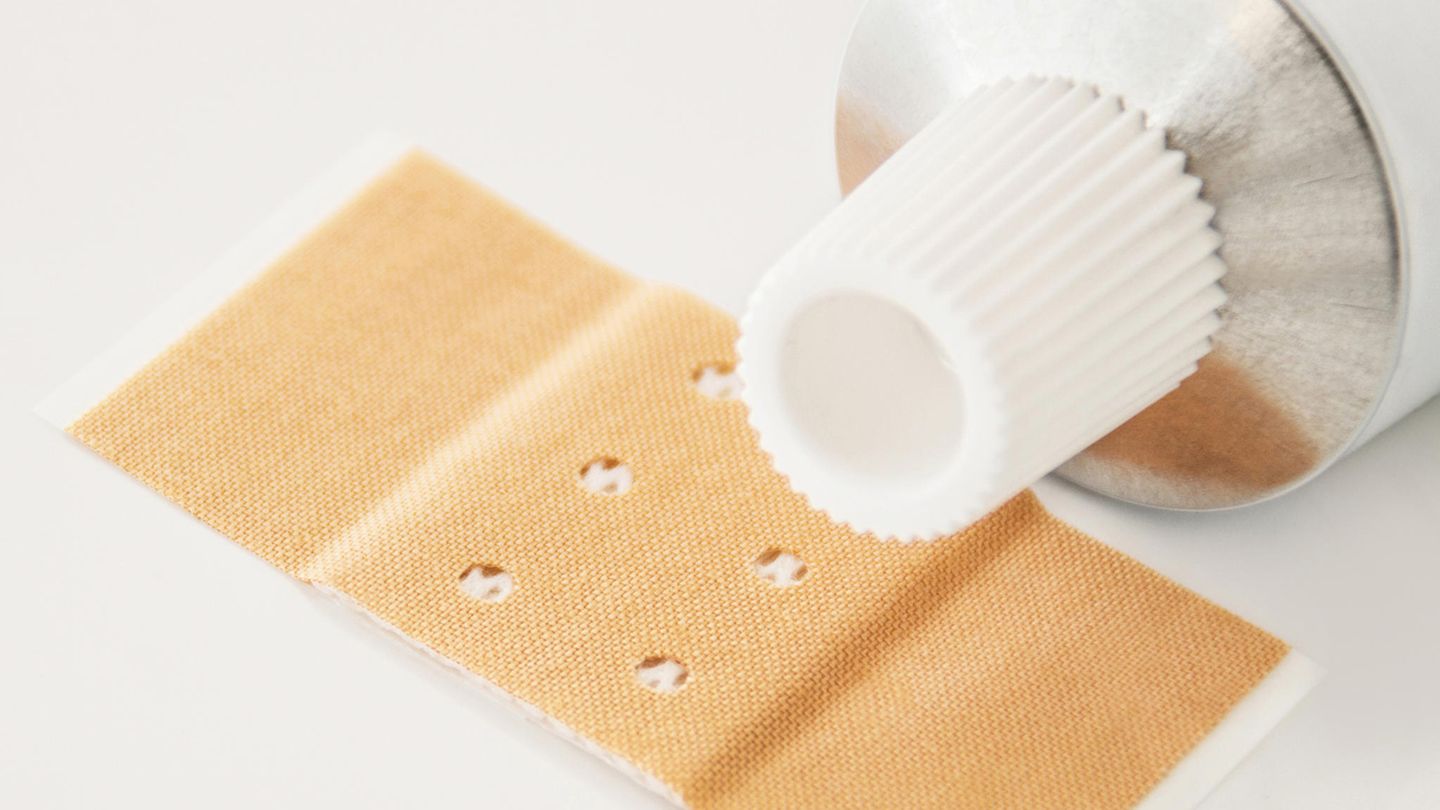Application and effect
Does train ointment help underground pimples, ingrown hair and purulent abscesses?
Copy the current link
Add to the memorial list
Small pus pimples can be easily expressed and heal on their own. However, if inflammation occurs under the skin, a painful infection can result.
Train ointment is usually obtained from slate oil and contains ammonium bituminosulfate: an antibacterial, anti -inflammatory and circulatory -promoting active ingredient. But what is much more important: it accelerates the healing process by literally “pulling” the inflammatory stove to the surface of the skin and the pus can thus drain more easily. Train ointment should therefore be used primarily to treat slight inflammation (such as pimples under the skin and ingrown hair), but also with purulent abscesses – but the latter have to consider a few important points. Which these are and how you apply the ointment correctly will be summarized in more detail below.
A mode of action: this promises a tensile ointment
Regardless of which tensile ointment you choose – the effect always remains the same. A widespread classic is : It softened the skin and makes it permeable so that the pus can drain off. At the same time, it has an anti -inflammatory and antibacterial effect on the infection. In other words, not only the inflammatory stove is combated by the treatment, but also the spread of the germs it contains. In addition, the tensile ointment also has a pain -relieving function and weakens the itching. And that’s not all: Ichtholan stimulates blood circulation to accelerate the healing process. The same applies to other manufacturers such as Wintrop or Infectopharm, which use the same active ingredient (ammonium bituminosulfonate) in their tensile ointment. They all offer their products in two different effects: 20 percent and 50 percent.
Depending on how far the inflammation has already progressed and how deep it sits under the skin, a lighter or stronger dosage of the tensile ointment is recommended.
How to apply a tensile ointment correctly
With a tensile ointment, slight inflammation such as underground pimples, ingrown hair and also shaving pimples can be treated – or even minor injuries under the skin such as splinter. In the initial phase one is enough However, if the infection is stronger, you should better use a higher concentration of active ingredients. It is best to proceed as follows when using:
- Apply the black tensile ointment thinly and selectively with a cotton swab on the inflamed area.
- Glue a large patch over the wound so that the ointment does not contaminate your clothes or bed linen.
- Wash your hands and before every treatment so that you do not transfer new germs to the wound.
- Change the bandage daily and wash the remains of the tensile ointment with warm water before using new ones.
- Repeat this process several times because it can take three to five days for the pus to step onto the surface.
Important: The train ointment should never come into contact with their mucous membranes or their eyes.
Treat abscesses: this must be observed
In principle, tensile ointment is also suitable for the treatment of abscesses. This is a collection of pus under the skin, around which a capsule -like membrane forms that is supposed to protect the body from an infection. Pus cancellations can form everywhere: under the armpits, in the genital area or on the buttocks. Therefore, they are very uncomfortable, painful – and dangerous if they are not treated and end in blood poisoning. Therefore, it is advisable to see a doctor if:
- the abscess is particularly large or sits deep under skin
- the abscess is on the face or close to the head
- the abscess has been severely ignited and caused great pain (an antibiotic may be required)
On the other hand, if the abscess is still in early stages, you can use a Treat as described above so that the pus can flow out faster in it.
Does tension ointment have known side effects?
Usually the use of tensile ointment is completely harmless – but it can happen that some are allergic to it: If your skin begins to burn or itch after treatment, you should immediately wash the ointment with warm water. If you are pregnant or breastfeed, it is more not advisable to use it. If in doubt, you can also ask your doctor for advice in advance. Otherwise, no side effects of tensile ointments are known.
Note: This article contains general information and cannot replace a doctor’s visit.
*This article contains so-called affiliate links to products in online shops. If a user clicks on it and buys something, the publisher receives a commission from the dealer, not from the manufacturer. Of course, where and when you buy a product is up to you.
Source: Stern
I’m Caroline, a journalist and author for 24 Hours Worlds. I specialize in health-related news and stories, bringing real-world impact to readers across the globe. With my experience in journalism and writing in both print and online formats, I strive to provide reliable information that resonates with audiences from all walks of life.




